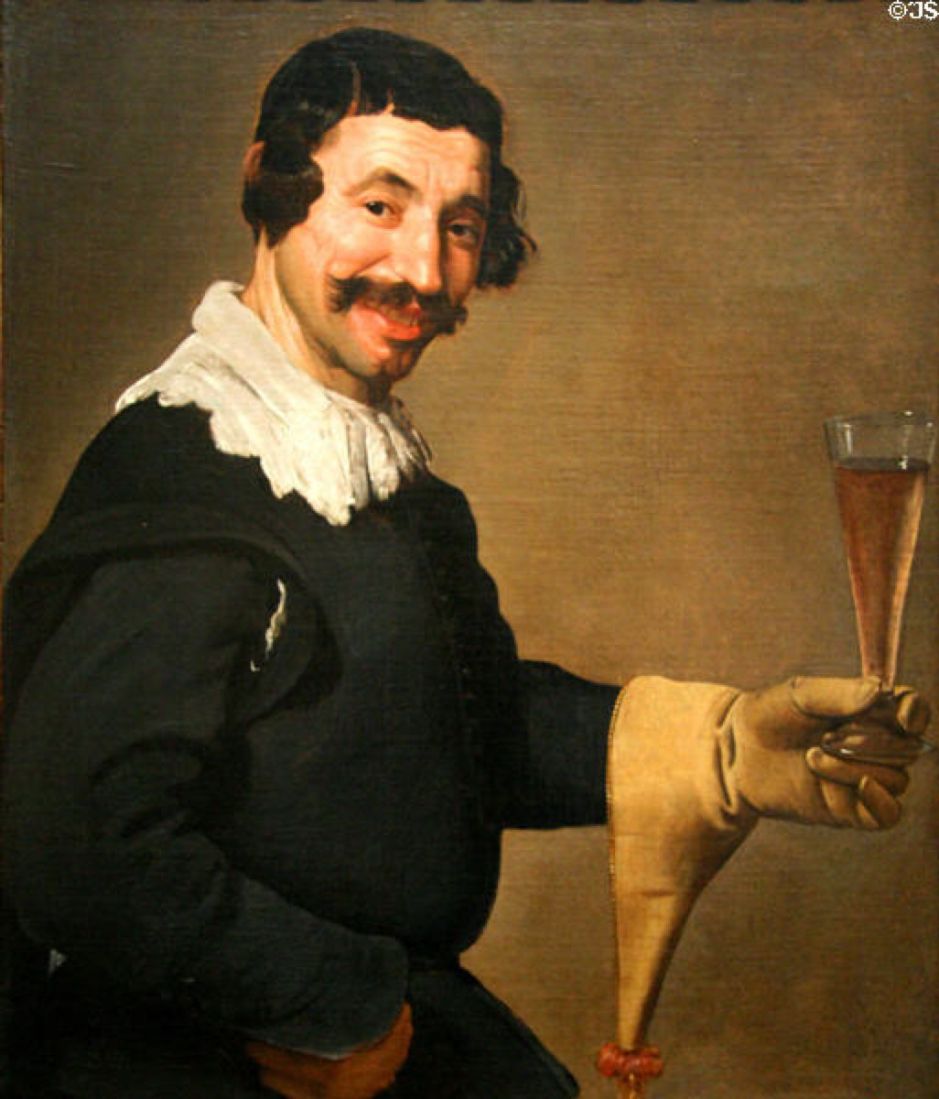It’s highly unusual for figures in paintings to have their hands covered. Although people have worn gloves since ancient times, in most European cultures they’ve been among the more unusual items of dress except when going outdoors. They’ve played little if any part in myth, and only started to become fashion items in the thirteenth century, and didn’t really catch on until the nineteenth. That was the same time that artists began painting figures outside the studio, a place where wearing gloves would have been peculiar even in the north European winter.

Hans Andersen Brendekilde’s Melting Snow from 1895 is a realistic depiction of a harsh winter in Denmark. An elderly couple are doing the outside jobs in typically grey and murky weather, in the backyard of their thatched smallholding. He has walked down to fetch a pail of water from a hole that he has made in the ice on the river, and wears a pair of grey woollen mittens. These figures don’t appear to have been added into the landscape during studio sessions.
When a figure in a painting is shown wearing gloves indoors, that’s a signal that they’re expecting to go out imminently.

Rebecca Solomon’s The Appointment (1861) is an early problem picture, with a deliberately open-ended narrative. A beautiful woman stands in front of a mirror, and looks intently at a man, who is only seen in his reflection in the mirror, and is standing in a doorway behind the viewer’s right shoulder. The woman is dressed to go out, and is holding a letter in her gloved hands.
While still rare in paintings, armoured gloves have a long history in art. Hieronymus Bosch uses one in his retelling of Christ being crowned with thorns during the Passion.

In The Crowning with Thorns (c 1490-1500), four men are shown around the head and body of Jesus Christ. At the top left, a crossbowman dressed in a green cloak and wearing full armour on his right hand holds the crown of thorns, so as to place it on Christ’s head. This soldier has a steely look of determination, his lower jaw thrust forward, mouth closed. A crossbow bolt is tucked through the matching green turban on his head.

Just a few years later, in one of the earliest still life paintings, Jacopo de’ Barbari’s Still-Life with Partridge and Iron Gloves features a pair of them joined by a crossbow bolt.
Distinctive leather gloves are also worn by falconers and, if this next painting is to be believed, by some wine sommeliers.

Man With a Wine Glass (c 1630) is attributed to Velázquez, and shows this sommelier wearing an unusual cream leather glove.
A discarded glove, no longer on a hand, may play a significant role in the reading of a painting.

William Holman Hunt’s The Awakening Conscience, was painted during the period 1851-53, and assembles its story from a multitude of clues in its image.
It shows a fashionable young man seated at a piano in a small if not cramped house in the leafy suburbs of London, in reality Saint John’s Wood. Half-risen from the man’s lap is a young woman who stares absently into the distance. They’re clearly a couple in an intimate relationship, but conspicuous by its absence is any wedding ring on the fourth finger of the woman’s left hand, which is at the focal point of the painting. This is, therefore, extra-marital.
Around them are signs that she’s a kept mistress with time on her hands. Her companion, a cat, is under the table, where it has caught a bird with a broken wing, a symbol of her plight. At the right edge is a tapestry with which to while away the hours, and her wools below form a tangled web in which she is entwined. By the hem of her dress is her lover’s discarded glove, symbolising her ultimate fate when he discards her into prostitution.
Where they do occur, particularly in the nineteenth century, gloves are most commonly an indication of the wearer’s compliance with fashion. As a general rule, the less functional the handwear, the more fashionable it became.

Henri Fantin-Latour’s superb three-quarter-length portrait of his friend Édouard Manet from 1867, shows the painter at thirty-five, then the leading avant-garde artist in France. He’s immaculately turned-out, with brown leather gloves, one removed and being clutched by the other hand against his small walking stick.

Edmond Aman-Jean’s Woman with Glove from about 1900-02 has a dreamlike quality thanks to its patterned strokes of colour.
One artist seems to have had more of a fascination for gloves: Fernand Khnopff.

This started fairly innocently, with a passing glimpse in his portrait of his sister painted in 1887. Two years later, in his Lawn Tennis, or Memories (1889), a pastel collage of paintings of his sister, it grew stronger in the brown leather gloves each figure is wearing to play tennis.

Khnopff’s Incense from 1898 reaches peak gloving when he places his sister Marguerite in a heavy cope of brocade bearing a thistle motif. Her hands wear long silk gloves, the left holding a silver and glass incense burner by its base. Her head is covered with more folds of fine fabric, and behind – either seen through glass or reflected in a mirror – are the windows of a cathedral. This is as mysterious as the wry smile on his sister’s face.

